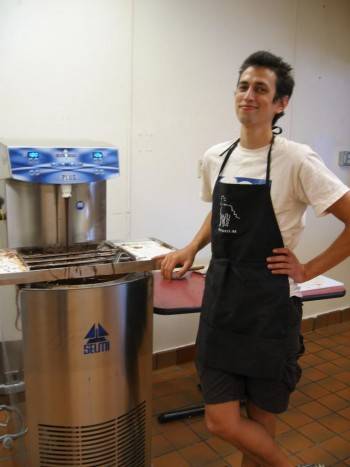 (Ed. Note: Daniel Schreiber passed away suddenly late Monday night / early Tuesday morning. At Smile Politely, we found Daniel to be exactly what defines all that is good about our community: compassionate, caring, thoughtful, driven, and most importantly, kind. We wish his family and friends as much peace as is possible right now.)
(Ed. Note: Daniel Schreiber passed away suddenly late Monday night / early Tuesday morning. At Smile Politely, we found Daniel to be exactly what defines all that is good about our community: compassionate, caring, thoughtful, driven, and most importantly, kind. We wish his family and friends as much peace as is possible right now.)
Daniel Schreiber is a man on a mission to bring people excellent chocolate. “I want to educate people on chocolate and bring them an intense flavor experience,” Schreiber said. “This is not candy, but food.”
Schreiber, 24, is the entrepreneur behind Flatlander Chocolate, one of only about a dozen bean-to-bar chocolate companies in the United States. A California native, Schreiber moved to Illinois from Palo Alto six years ago to attend the University of Illinois, where he is currently taking a leave of absence from his computer science graduate program to pursue his vision.
The idea of Flatlander originated as a “crazy idea” three years ago between Schreiber and a friend. It was last July that he decided to give his chocolate suggestion a try. “I needed a new hobby after memorizing the first chapter of Ulysses.”
Schreiber posted his business idea online at the fundraising site Kickstarter in order to raise money for the purchase of necessary chocolate making equipment. “I bugged my friends relentlessly and succeeded in raising $1,050 through some acts of extreme kindness. For about a month, all I did was try to get people to give me $10, but it was worth it.”
Schreiber is knowledgeable about the history of chocolate and can recite fact after fact about its past. When he began reading about it he was intrigued by the idea of the use of chocolate as sustenance for Aztec warriors during their journey. “They didn’t treat it like candy. It was a fine food to consume like wine,” he said.
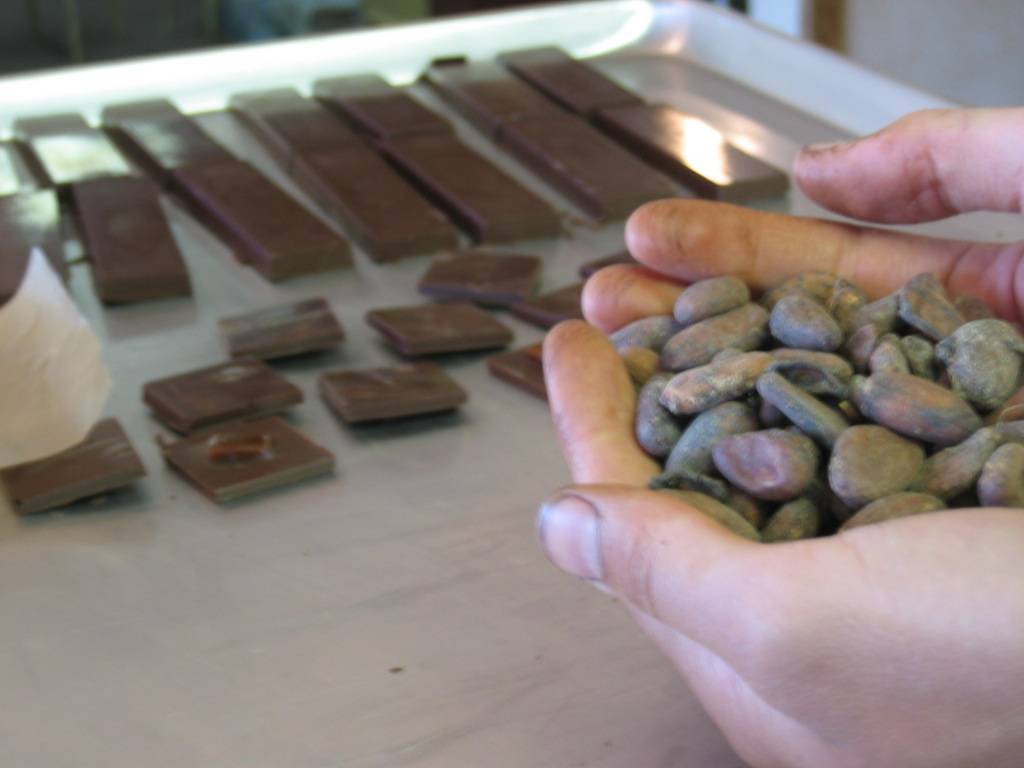
Further inspiration and motivation came from other unique bean-to bar chocolate makers in the U.S. He toured Theo Chocolate Inc. in Seattle and read about Alan McClure of Patric Chocolates in Missouri. “When I toured Theo Chocolate I said, ‘this is the best chocolate I’ve had in my whole life.’ Last winter break I said, ‘I think I can make a go of this as a business.'”
Now, Schreiber is fully dedicated to his pursuit. He has acquired a new space at 1505 E. Washington Street in Urbana where he can produce his chocolate. The location, which formerly housed restaurants, is not currently distinguishable as Flatlander, but Schreiber has plans to change its barren parking lot into a garden. Aside from the obvious aesthetic appeal, Schreiber doesn’t need all of that space, since he doesn’t own a car. Instead, he relies on his bike to help him deliver his product, a characteristic that is reflected in the bicycle logo of Flatlander Chocolate. “I started out biking to people’s houses to drop off chocolate and now I’m biking to grocery stores.”
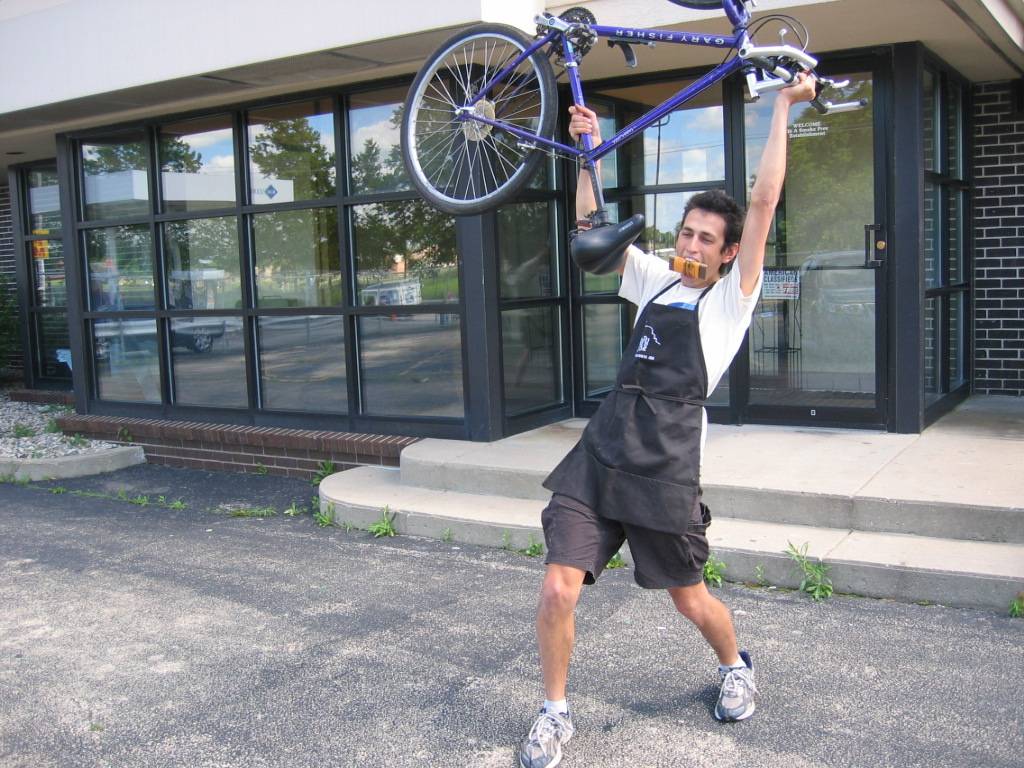
While the new space is not the immediate central location near downtown Champaign that Schreiber first sought, he is hopeful that it can be a boon to the economy by bringing local goods to the community. “I want to improve the landscape of Washington Street by bringing beneficial business activity,” he said.
Schreiber is no stranger to the importance of local products for the health of the community. He works three days per week at Prairie Fruits Farm, his neighbor at the Urbana Farmers’ Market. He has experimented by using their goat cheese in truffles and he plans to experiment with Parmesan cheese chocolate at some point. “The more awesome (local) stuff we have, the more they can play off of each other and continue to be awesome. It’s nice to see people pursue their passions. By supporting those people you make space for friends to live their chosen lifestyle,” he said.
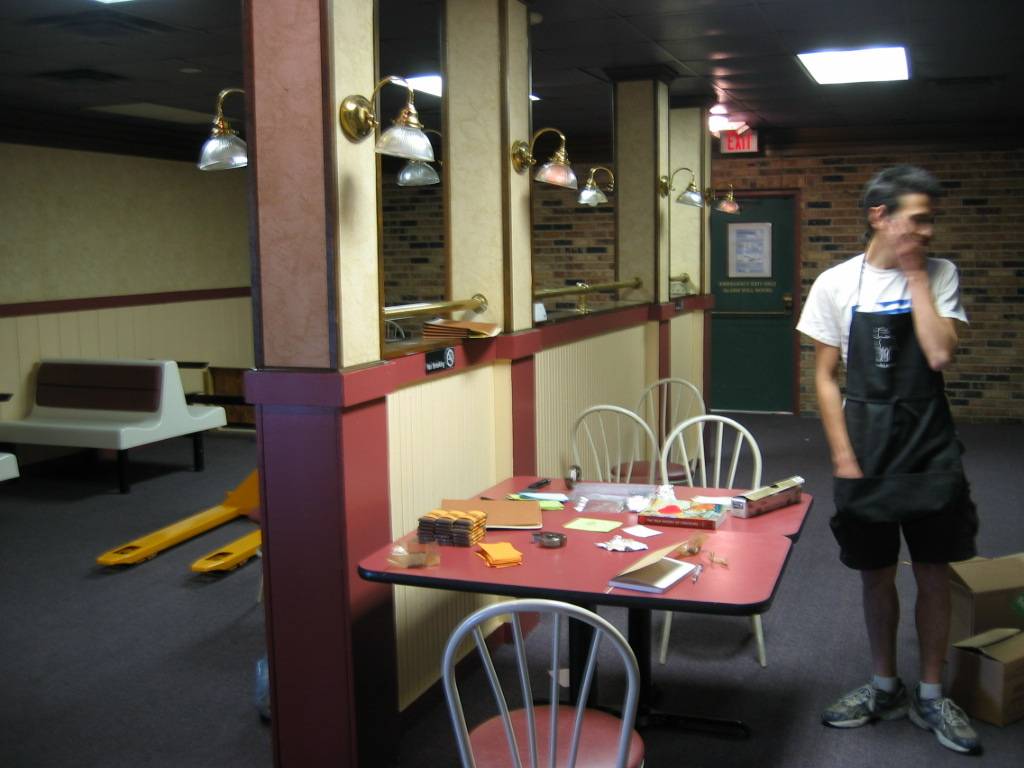
His philosophy is in full bloom at the Farmers’ Market each week where he gets to spread the word about his product. “I hope to become friends with people in the community and I hope that they get to know who I am,” he said. “It’s interesting to switch from info worker to manufacturer.”
As a manufacturer, Schreiber spends about three days on a batch of chocolate. The beans are roasted in the afternoon of the first day. The next morning the beans are cracked and winnowed (the husks are removed) and then they are loaded into the grinder. “The grinder is a machine that accomplishes two tasks: one is to ‘refine’ the chocolate to achieve a smooth texture (if smoothness is desired). The second is to ‘conch’ the chocolate, which is a smoothening of flavor and texture. Flavor is ‘smoothed’ (made less intense/less acidic) because the heating and mixing allows volatile acid and flavor compounds to evaporate. Texture is smoothed by continuous mixing, as each individual particle is coated in fat (cocoa butter).”
After about a day in the grinder, the beans are finally ready to be tempered and molded and, eventually, packaged to sell.
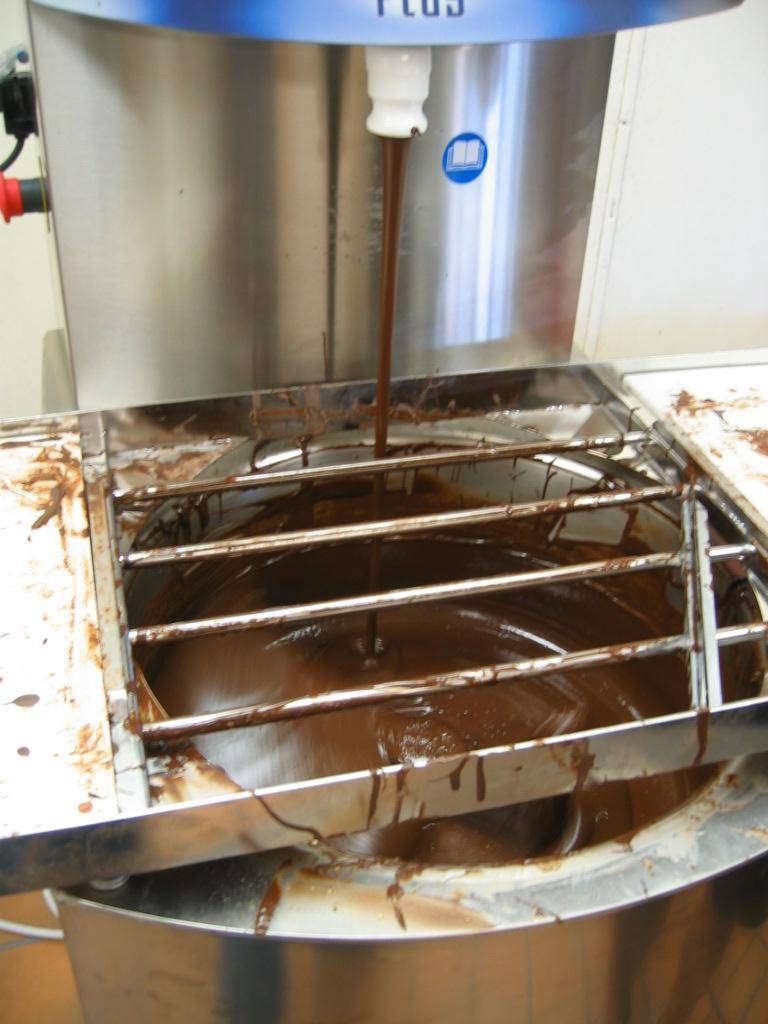
Schreiber’s chocolate brings a range of intense and unique flavors that are a welcome change-up from the ubiquitous homogenized chocolates. The flavors range from hints of an olive taste (the Panamanian dark chocolate) to fruity, bright, and acidic (the Dominican Republic origin).
Schreiber says the taste factor is not only dependent on the origin of the beans and the ingredients, but also on the intricacies of each step of the manufacturing process.
“The degree to which one roasts and conches have big effects on how intense or mild the flavor or the chocolate will be. I tend to roast light and conch less than many, which leads to more intense fruit-like flavor,” he said.
Outside of his production schedule, Schreiber’s energy is focused on the demands of getting his space fully functional, a task that he feels well equipped to handle. “As a graduate student you’re trained to work.”
He hopes to establish three core origins (a single origin chocolate is one that contains cacao beans from only one country) and then continue to expand his product line from there. He is working on a direct trade connection with As Green as it Gets, a non-profit in Guatemala, to bring that origin into his list of options. One day he hopes to have a map on display at his counter with all of the chocolate origins he has to offer. Currently, he has bars comprised of beans from the Ivory Coast, Panama, the Dominican Republic, and Madagascar.
“People find the taste of single origin chocolate surprising,” said Schreiber. One of his first customer interactions was with a kid at the Farmers’ Market who called him “a bad man” after being surprised by the intense, non-candy quality of his Madagascar dark chocolate. He said that most of the chocolate that we’re used to is made of about 30 to 40 percent cacao, while the rest is mostly sugar and soy lecithin, which is used to standardize the taste. “I wish people would call products by their first ingredient,” he said.
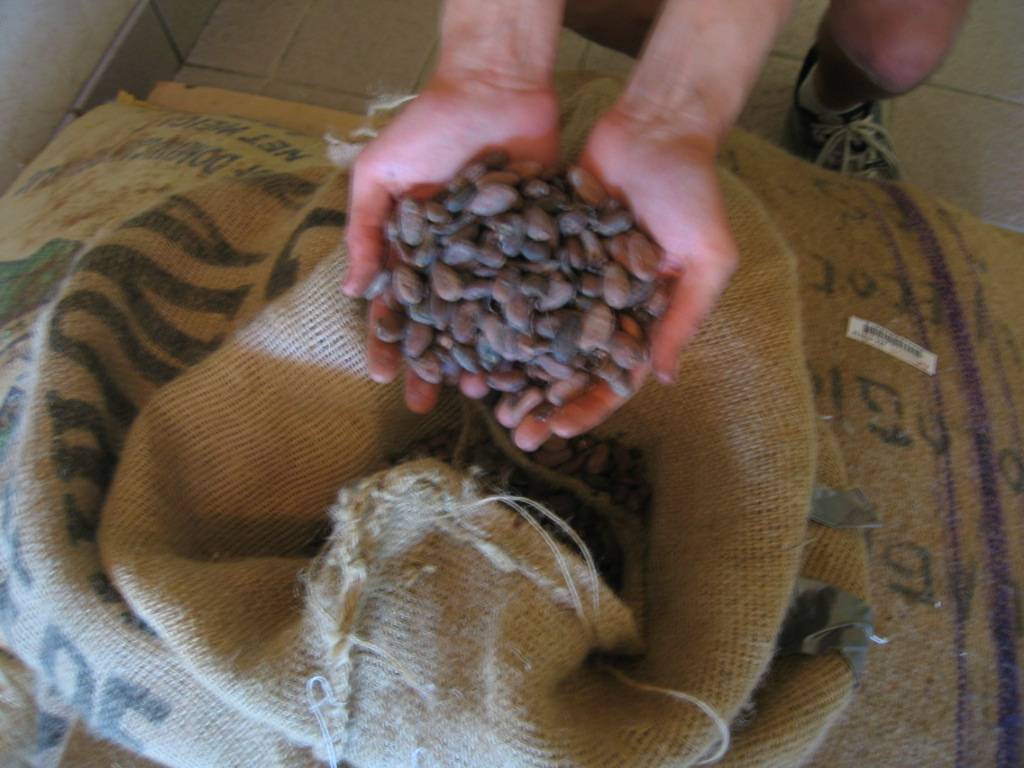
“The state of chocolate now is as beer would have been 20 years ago. People began appreciating richly flavored, intense beers (then) and (now) chocolate is the same way.”
Flatlander Chocolate is available at various locations throughout Champaign-Urbana: Amara Yoga and Arts, Café Paradiso, Common Ground Food Co-op, the CU Art Theatre, Strawberry Fields, Urbana’s Market at the Square, World Harvest, and online at www.flatlanderchocolate.com.
(Rest in peace, Daniel Schreiber: 1986 – 2010)








